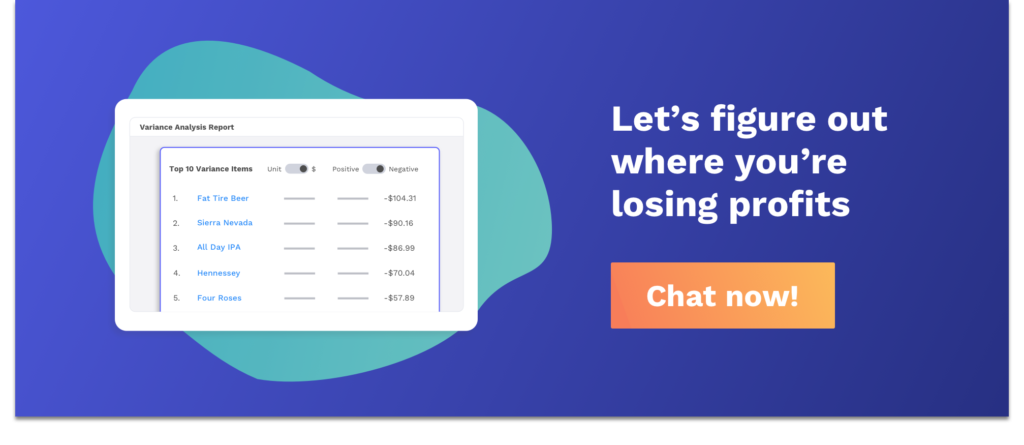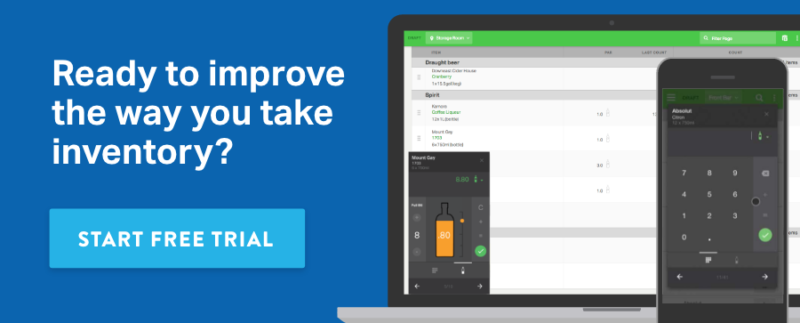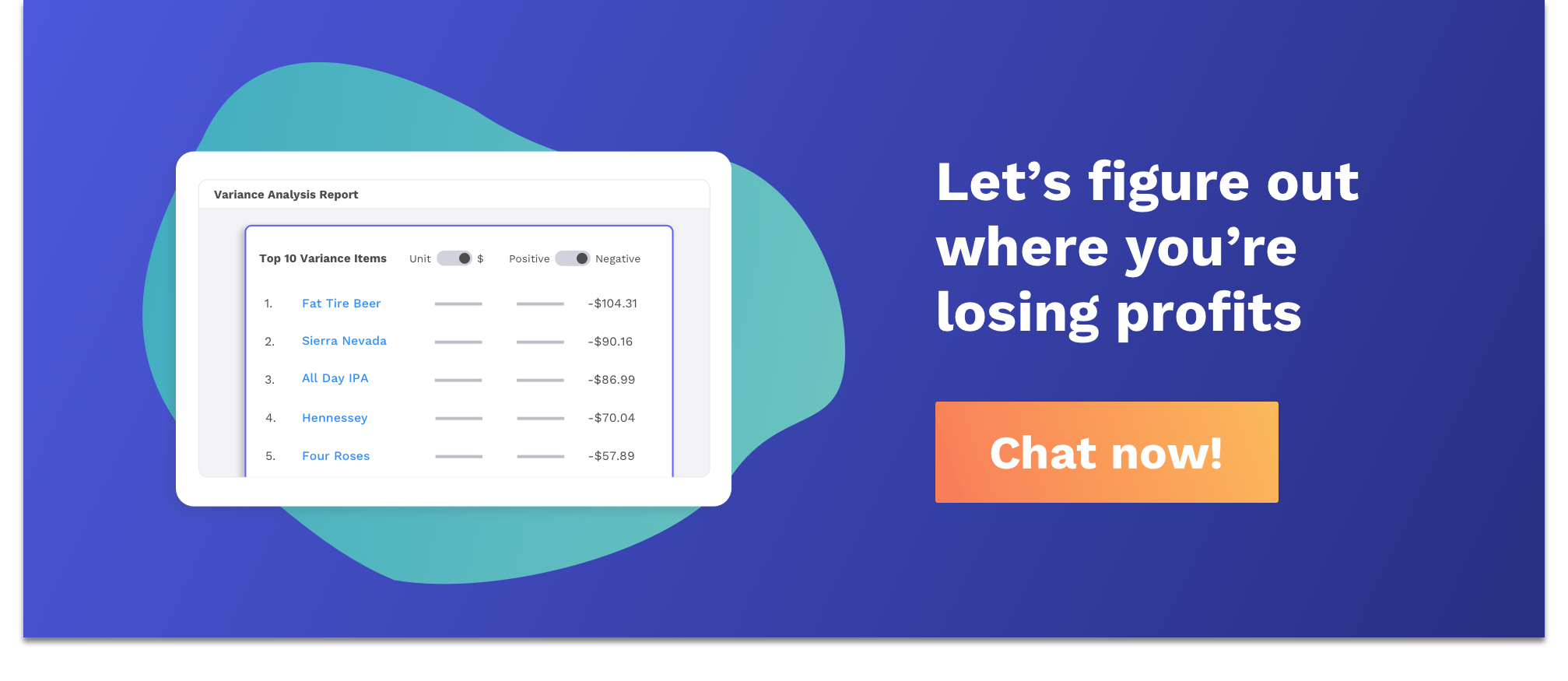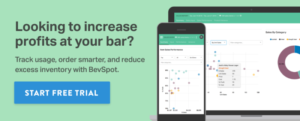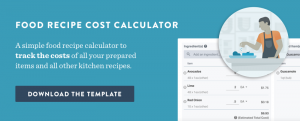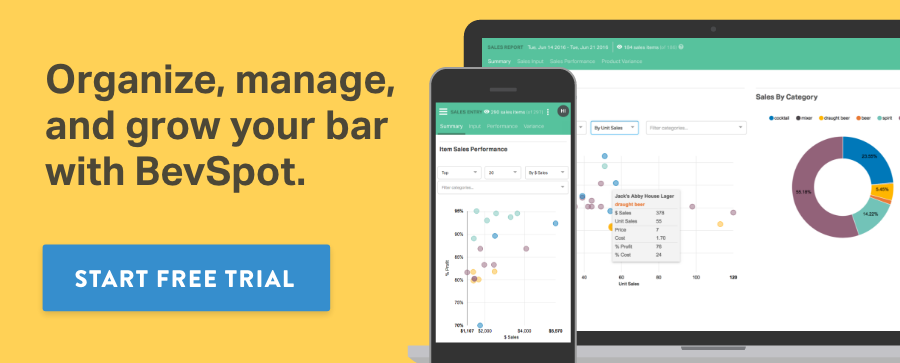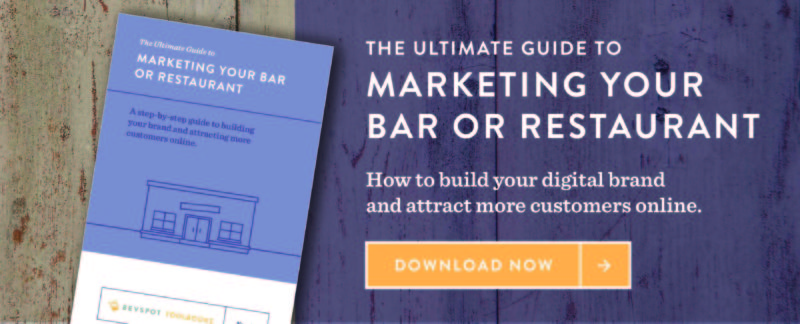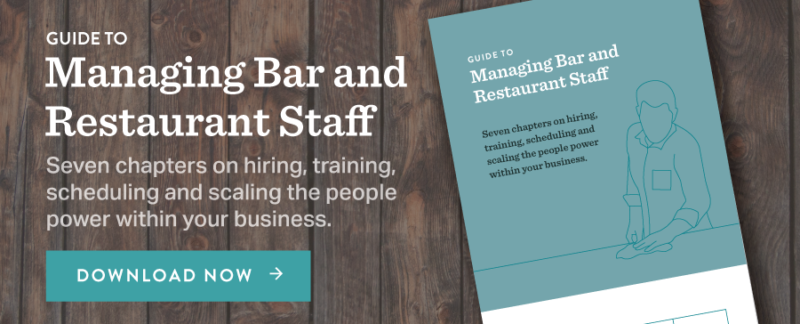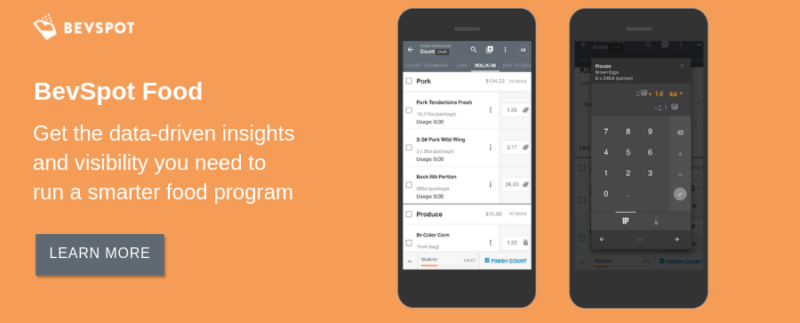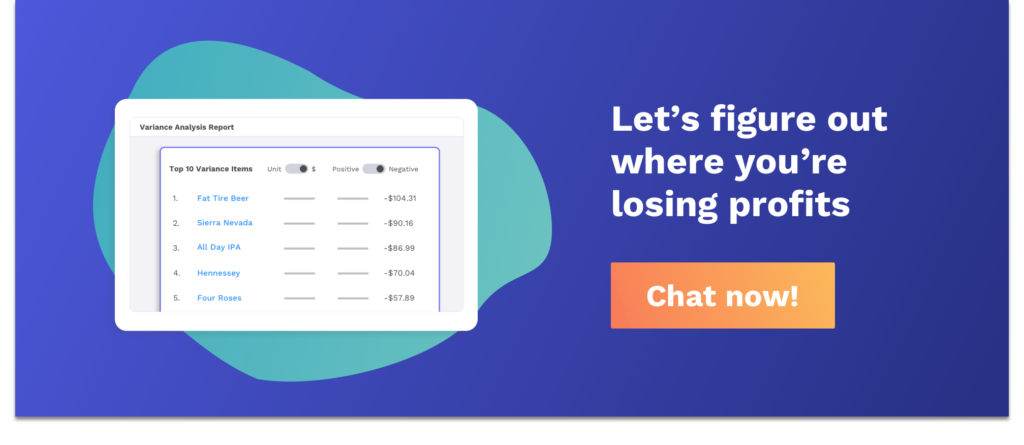7 Habits of the Successful Kitchen Manager
Becoming a kitchen manager means added responsibility.
You’ve earned it; you’re organized, a recognized team leader, and competent anywhere you’re needed in the kitchen. There’s a lot to handle, and too often you can get swept away by the day-to-day needs of the kitchen and lose sight of the big picture.
We’ve put together a list of seven habits successful kitchen managers have to help reinforce your leadership skills. We’re not going to talk about ordering and kitchen inventory procedures; that should already be a part of your routine. Rather, this addresses ways to build a better, cohesive team and improve your kitchen’s culture.
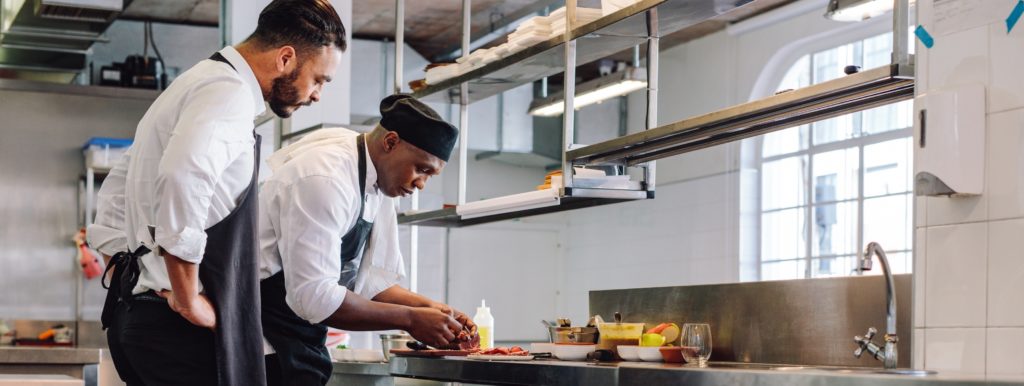
Let’s dive in.
1. Be effective in the office, not just on the line
Moving from a cook to a kitchen manager the career progression many cooks pursue. However, it is important to recognize that as a kitchen manager, your duties are now shifting towards administrative responsibilities. Prepare to spend more time focusing on ordering, inventory, hiring (and firing), and training your team, but be ready to jump back in where needed when the line gets busy.
2. Create consistent schedules in a timely manner
Staffing is challenging enough already. Staying on top of scheduling is about more than keeping your kitchen staffed, but showing your team you respect their time outside of work. Work-life balance is especially important in the service industry to keep team members from getting burned out. Working with your team to establish a somewhat regular schedule can help them achieve this balance. However, set boundaries and expectations; you’re the boss, you ultimately make the schedule. Strive to have your schedule posted a minimum of four days out; ten is even better. The earlier you post, the more time you have to react to staffing shortcomings.
3. Keep on top of staff training
Especially when staffing is tight, it can be tempting to let new hires fill gaps in the schedule they aren’t adequately trained to fill. Letting a new team member develop bad habits or cut corners early in their training only causes trouble down the road. Good training is a proactive measure against high variance. Take time to follow up with new hires after each shift, monitor the quality of their work, and don’t be afraid to provide constructive feedback.
4. Get comfortable delegating
As much as you may want to handle prep, ordering, or training yourself, you really can’t. Becoming comfortable delegating tasks can be a difficult step to take for new a kitchen manager. Try delegating more extensive prep projects or training to your more experienced team members, and simpler tasks to your less experienced ones. This relieves some pressure off and frees you up for administrative work and long-term projects. Be sure to walk team members through the process the first couple of times to ensure their work is consistent with your standards. Team development like this helps get team members more invested in their work and builds their value as an employee.
5. Hold frequent pre-shift meetings
When possible before service, when most of your team is on the clock, take ten minutes to briefly meet with them as a group. In an organized manner, talk about specials, 86’d items, cleaning projects, and identify needed maintenance. This meeting is an ideal time to get constructive feedback about what is working, what needs addressing, and ensure everyone is on the same page with new dishes or systems. Also, use this time to highlight outstanding performances on your team. Above all, try and stay positive, as these powwows can set the tone for the shift.
6. Listen to feedback from your staff and guests
You’ve worked hard for your position as kitchen manager and put a lot of effort into your work, so sometimes it can be difficult to listen to feedback. Keep in mind that without a team and without customers, you wouldn’t have a business. If your team is struggling to adapt to a system you’ve put in place, or you receive repeated feedback from guests on a specific dish, recognize that perhaps it is not working. Don’t take it personally, but stay cool and consider options on how to improve it. Ultimately, the goal is to have a team that enjoys coming to work and repeat customers.
7. Keep up with industry news
Although keeping up with industry news might just seem like another task to add to your to-do list, it’s important to know what’s going on in the industry. Staying informed will help you make better decisions and spot trends early on, giving you an edge over your competition and maintaining profitability. This is an important part of your development as a manager. As a kitchen manager, you’re expected to be an expert in your field. Since your team looks to you for expertise, it’s important that you be a source of wisdom and guidance.
To stay up to date with industry news and best management practices, take a look at some of our other blog articles. If you have further questions about how to improve your kitchen, schedule a free consultation with one of our product specialists.
Schedule 15mins to chat with a product specialist
Start a FREE Trial Today! BevSpot offers full product education and account setup for all customers! No card Information needed!
How to do Liquor Inventory: Your Bar Inventory Step-by-Step Guide
Bar Inventory Basics
There are few tasks in the restaurant and bar industry more dreaded than bar inventory. It’s a long and tedious process, full of headaches, late nights in the storeroom, and involving the hands of several team members, but it can be made easier.
Start Your Free Trial With Bevspot Today
Having an efficient bar inventory system in place is crucial to running a successful beverage program—we recommend using a cloud-based software solution for keeping track of what you have on-hand. Methods like pen-and-paper or bar inventory spreadsheets have become outdated for many reasons—they and don’t allow you to easily connect your liquor inventory data to your purchasing and sales data to truly run a data-driven business–they also don’t stand up well to staff turnover or menu changes. And, believe it or not, there are several things you can do (aside from calling Jon Taffer) to make bar inventory management easier.
So, for all you bartenders, bar managers and bar owners out there, let’s get to it—what’s the best way to do liquor inventory?
Sufficiently stocking a bar with alcohol is just the beginning. Bar Inventory software is important for maintaining enough liquor, of course, but it also allows your business to identify:
- Product Usage: Exactly how much of each ingredient you are going through
- Cost of Goods Sold: A benchmark for the total cost of producing all the menu items that you sell
- Product Variance: Where is your shrinkage (or lost profits) is coming from
Completing consistent hard counts of your bar’s inventory also gives you the data needed to:
- Set pars for each product based on actual usage data
- Calculate pour cost should be for each product
- Pinpoint Excess and Unused inventory items to get them off your shelf
The ultimate goal is to calculate your inventory usage for a certain period.
Many factors play a part in this process, but here is the basic method.
You’ll need to know:
- How much stock you had at the beginning of your inventory period
- How much stock you have at the end of this period
- How much stock you received during this period
You’ll take these numbers and use the following formula to determine your inventory usage: starting inventory + received inventory – ending inventory = usage.
Easy, right?
When you know your usage amount, you can move on to the next step and turn this information into useful data to better manage your bar. But we’ll get to that in part 2 of this series.
First, let’s look at what needs to be done to find the information that will help you answer this formula.
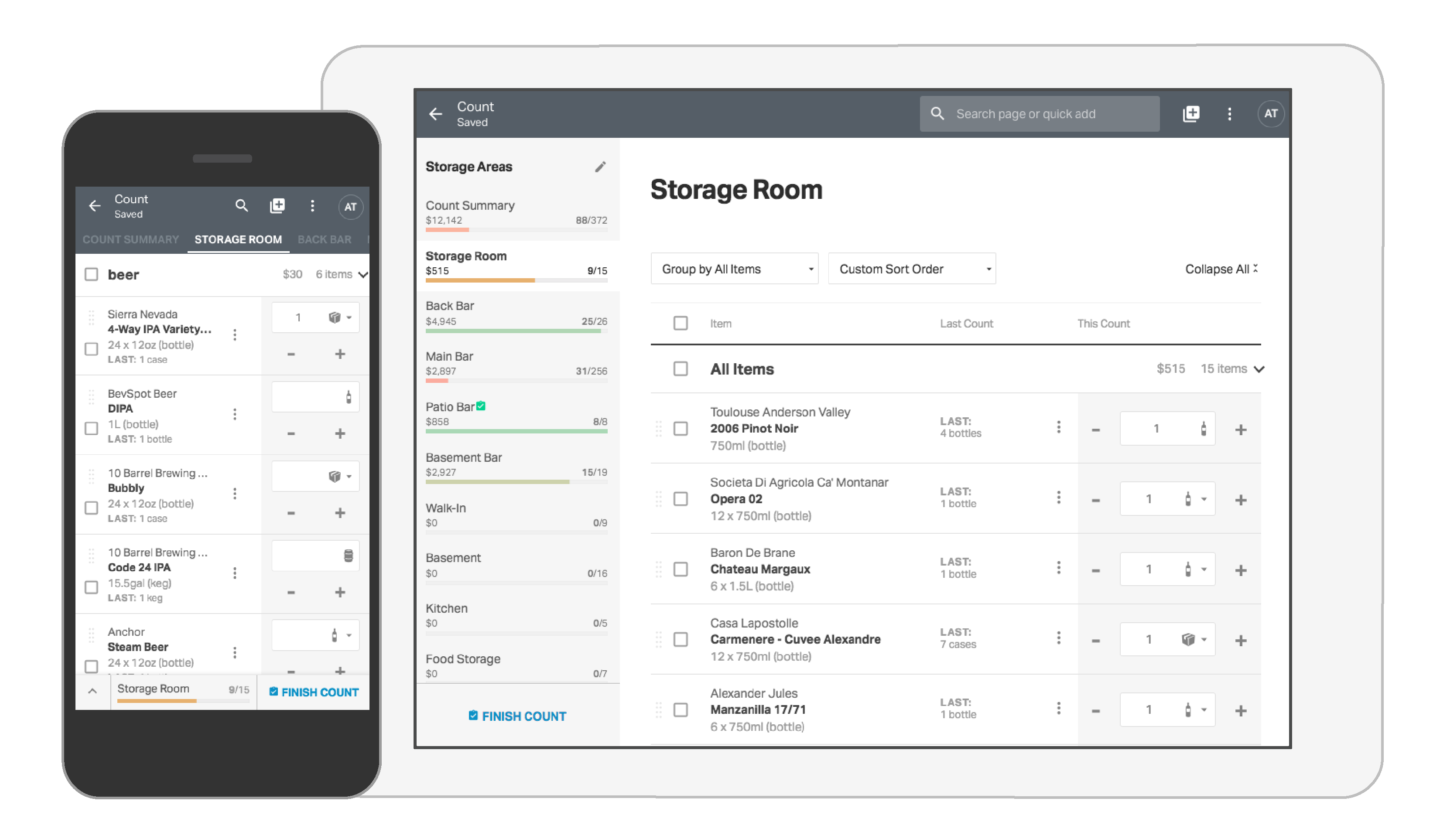
How to do Liquor Inventory
In order to determine your inventory usage, you need a beginning and an ending inventory count, taken once at the start of the period and once at the end, respectively. Here are some inventory tips before we get into the details:
- Take your count the same way every time; if you start counting from left to right, you should always count left to right.
- Keep your inventory periods consistent (i.e. weekly, bi-weekly or monthly).
- Find a method that works for you. Some bar managers have one person shouting out names of the liquor while another replies with the count; others have individuals do the counting and recording alone.
- Take inventory while the bar is closed so that no product slips in or out while the count is in progress.
- Properly train your employees in inventory counting. This includes things like keeping an eye out for specific issues or recording significant spillage or breakage of whole bottles.
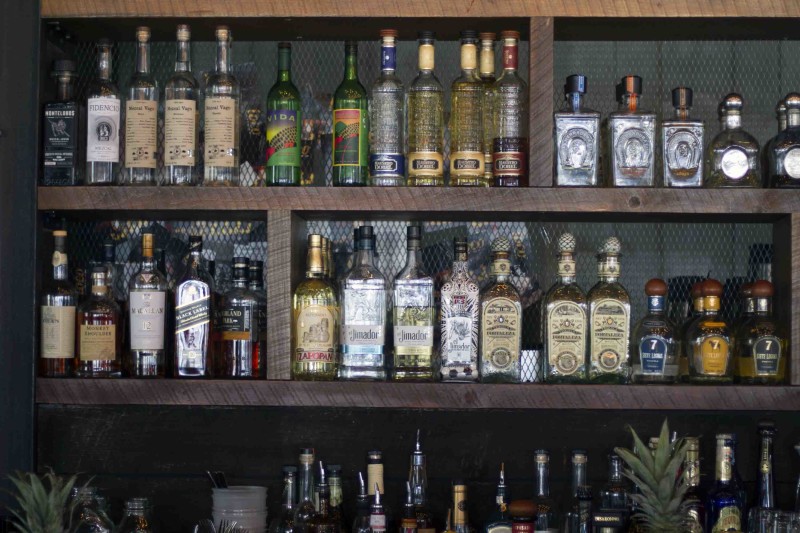
Now, let’s go through a step-by-step example of how to do inventory at a bar.
This imaginary establishment has a front bar, a back bar, a storeroom, and a walk-in cooler. This first count will take place at the beginning of our inventory period.
- If you’re still using bar inventory templates to take counts, we understand, but at some point, you should consider trying out our bar inventory app and software system (we offer a free account to try for 3 inventories).
- Arrange the liquor inventory spreadsheet according to the way your alcohol is set out on the bar. This will save you from having to pull all the bottles on top of the bar and arrange them alphabetically.
- Start at the front bar. Count the bottles the way they’re positioned and, if needed, filter them alphabetically on the spreadsheet when you’re done. Include the alcohol’s type, brand, name, and bottle size. Also include a column for your bar back, storeroom, walk-in, or any other parts of the bar where alcohol is kept.
- The easiest (and most commonly used) counting method is to visually take note of how much liquid is in each bottle, separating it into tenths. Take a look at where the line of the liquor falls, and estimate if the bottle is half full (0.5), a third full (0.3), etc.
- Repeat this process of “tenthing’ for every bottle, and enter the numbers onto the sheet, separating them into spirit, wine, and beer categories.
- Repeat this process for the back bar, walk-in, and storage room. Your counts will likely vary here, based on a mix of cases and bottles, rather than bottles only, so you may need to add another column to your sheet to account for this.
- Finally, take your sheet and add up the totals for each category.
- At the end of the inventory period—whether it be a week, two weeks, or a month—you’ll take all these counts again, repeating the exact same process. This will leave you with a beginning and an ending inventory count.
Over the course of this period, you’ll sell and receive liquor. Keep a record of how much product you take in (this should be in your invoices from the week before), and the product you sell should be recorded in your POS system (we’ll look at that more in part 3 of this series).
In a new excel sheet, enter the totals of all your liquor categories into three columns:
- Starting inventory
- Received inventory
- Ending inventory
Take the simple formula from before: starting inventory + received inventory – ending inventory = usage.
Schedule a call with one of our product specialists to find out how we can help.
- No card information needed!
You now have your inventory usage for this period.
Once you determine your usage, you’ll be ready to do your pricing and ordering, which we’ll cover in part 2. We’ll look at how to incorporate costs into this sheet in order to identify total prices of both purchases and sales, and then we’ll look at things like pour costs and invoicing.
Check out the next two articles in this series:
Part 2: Ordering and Invoicing For a Bar
Part 3: Managing Sales and Profitability For a Bar
But here’s the thing.
We can try our best to help with pen-and-paper inventory, but it’s still going to remain a complicated and tedious part of bar management.
You know what will make it all easier?
BevSpot.
There will be no lining up bottles on the bar, no more late nights in the storeroom, no more headaches. It’s the best inventory software out there.
Kitchen Inventory Done Right: a Step-by-Step Guide
Nobody loves taking kitchen inventory.
Kitchen Inventory is a daunting task that managers face each month, but it doesn’t have to be a headache. With so many storage areas in your restaurant, it can be a tedious task. Having the right tools and systems in place will make the process easier. There are many ways to approach taking inventory, such as BevSpot’s kitchen inventory app. This guide is designed to show you why you take inventory, how to set yourself up for success, and what to do with the results by calculating usage and cost of goods sold (COGS). While you’re here, take a look at our other blog posts, or speak with one of our awesome customer success representatives to see how we can help your restaurant run more smoothly.
Why Take an Inventory?
Particularly in small operations, it’s tempting to approach kitchen inventory control casually. There may be only one or two people handling ordering who are generally aware of what product is on hand. That doesn’t negate the need to track purchasing and ensure your costs are properly managed. Having systems in place to track inventory enables you to better manage these costs, and these metrics are what general managers and owners look at when evaluating performance.
Through taking inventory, the goal is to get the exact value of every food item in your kitchen to measure your restaurant’s performance. Having a good system for this in place can also identify:
- Financial Performance: An overall view of profits, costs and losses.
- Product Variance: Where your shrinkage and waste occurs.
- Pars: Ideal quantities for orders, what should be prepped, what’s needed on line.
- Food Costs: What your food costs should be for menu items and categories.
Looking for a bar inventory guide? We’ve got you covered.
Kitchen Math
The goal of inventory is to calculate your product usage for a certain period. Most managers like to see inventory taken at least once a month, but that cadence can vary to weekly or biweekly. Many factors play a part in this process, but here is the basic method.
You’ll need to know:
- How much stock you had at the beginning of your inventory period
- Amount of stock you received during this period
- Remaining stock at the end of this period
Use these numbers with the following formula to determine your inventory usage:

Usage is directly related to Cost of Goods Sold; usage refers to the “by volume” amount of product used, and COGS the monetary value of that usage. On the product level, multiplying usage by their product cost will give you your monthly COGS. With that information, you’re able to calculate your food cost by dividing COGS by total food sales. Check out this video for more information on COGS and how it relates to your business.
Being able to turn this data into actionable information to improve profitability within their restaurant turns a good manager into a great one. Additionally, usage also helps us generate par numbers, expose any over pouring or theft taking place and build smarter, leaner orders.
Kitchen Inventory System Basics
To solve the usage calculation above, you need three variables. The first, starting inventory, can be whatever the previous inventory total value was. If this is your first inventory, that could be zero.
The second variable in the calculation is orders received. This is straightforward, being the sum of all your invoices for the inventory period. Be certain to digitally record your invoices; BevSpot makes this simple by recording and storing invoices, as well as managing all your vendors and ordering from one easy-to-use platform.
Finally, is calculating ending inventory. Next inventory, this number will be used as your starting inventory. Here are a few general pointers for making your life easier before taking an inventory:
- Inventory Periods: Keep them consistent (weekly or monthly are ideal). This will provide a frame of reference to refer to and see how your restaurant has performed compared to previous inventory periods.
- Walk-In Organization: Maintaining an organized walk-in is not only healthy food-handling practice, but will also cut down on the time it takes to do your inventory.
- Storage Containers: Keep products in product-suitable, easy-to-measure containers. Most food storage containers already have volume measurements on them, making counting easier.
- Price Out Recipes: Price out your batched recipes, and keep recipes and costs up to date. This will simplify counting inventory, and make your final costs more accurate. If you need a system to help with this, BevSpot has this integrated with our software.
Kitchen Inventory app with BevSpot
Below, we’ve outlined the process of using a kitchen inventory list with a pen and paper. There’s nothing wrong with that, but it’s worth taking time to consider how inventory management software can help your restaurant run more efficiently. We’ve effectively bundled up the whole process for you. BevSpot’s inventory software dramatically simplifies this process, and you can do it right from your phone, tablet or computer.
After creating a free account, our onboarding team will help you set up inventory items, walk you through pricing batched items, setting up storage areas, POS integration, and guide you through the kitchen inventory software. As you continue to count inventory, place orders, and make sales, BevSpot crunches that data to generate advanced sales reports, expected inventory counts, par suggestions, and variance reports to identify shrinkage and waste.
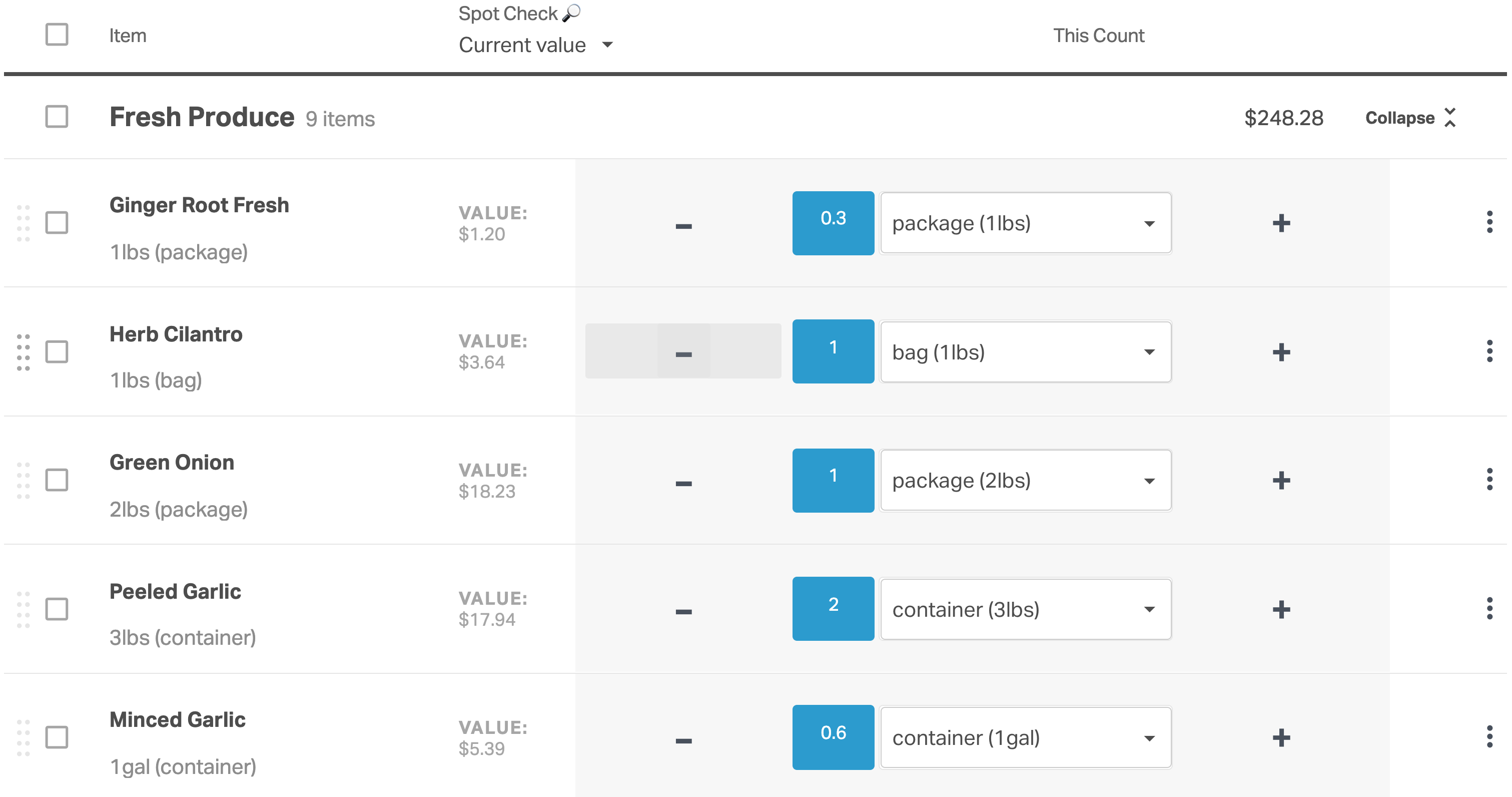
Doing Inventory Right
1. Setting Yourself up for Success
The first step in the inventory process is to set up your kitchen inventory sheet. This should be like your order guide, with the addition of batched or processed products. To help you stay organized while counting, arrange the items within each storage area instead of alphabetical or a random order. List items in the order in which you’d find them in your walk-in and dry storage (we call this sheet-to-shelf). This way allows you to move in a more efficient manner and not need to back-track.
Your sheet now has rows for all food associated items; dairy, produce, meat, batched or prepared recipes, dry storage, and paper goods. It is advisable to add a row beneath each product category (produce, dairy, poultry) to get usage and food costs for each category. This will be helpful for identifying areas of opportunity. Next is to determine how best to count items. Take into consideration what measurements and containers a product arrives in, but ultimately it should be whatever is easiest for you to count. It is helpful to keep the counting unit next to the item for quick reference.
The easiest (and most commonly used) counting method is to visually take note of how much product is in each container, separating it into tenths. This is an estimate whether the package is half full (0.5), a third full (0.3), etc. This works for product that is based on weight or volume, but if you are counting product that has individual pieces you may prefer to count “units” or “pieces”.
Your spreadsheet needs the following columns added:
- Columns for each storage area (walk-in, line, dry storage, etc.).
- A column to tally unit count totals.
- A column with the unit cost.
- One final column to calculate the total on-hand unit cost.

2. Taking Inventory
Now that you know why taking inventory is important and have put a good system in place – it’s time to take inventory.
Beginning with the walk-in (it generally has the largest amount of inventory, and your inventory template should be set up in walking order based on it), take counts of what we have on hand. For each item in the walk-in, tally the total count of that item per the count unit. Count the total number of portioned steaks, gallons of milk, bags or pounds of cheese, gallons of bolognese, everything, and record it in the “walk-in” column.
Moving to the line, expect more portioned and batched items. It likely won’t follow the same order as the walk-in, but continue recording counts in the “line” column.
Continue this process for any freezers, dry storage, and paper goods areas. With paper goods, it is easier to estimate how much of the container remains rather than counting individual units. Nobody wants to count individual paper straws or take-out containers.

All storage areas are now counted. Tally up each row in the “unit count totals” column, then multiply that number by the “unit cost” in “total on-hand unit cost”. Totaling that column (and it’s advisable to do it for each category) will give you your ending inventory. At the end of the inventory period—whether it be a week, two weeks, or a month—you’ll take all these counts again, repeating the exact same process. This will leave you with a beginning and ending inventory count.
3. Calculating Usage and Cost of Goods Sold
With inventory complete, you can now calculate the key metrics managers and owners use to understand how the restaurant is performing. To calculate usage, you’ll need your starting inventory + orders received – ending inventory. This effectively calculates the total value of all products that have left the restaurant.
Here’s an example:
Last month, your restaurant had an ending inventory value of $5,000. You ordered $12,000 of product this period and ended the month with $5,500 of product on hand.
$5,000 + $12,000 – $5,500 = $11,500
You used, and hopefully sold, $11,500 worth of product this month.
With that usage number, managers can also calculate the cost of goods sold, or food cost. To do so, divide your usage by total food sales for the same period. Multiply that number by 100 to get your percentage. Continuing the example, the fictitious restaurant had $34,500 in food sales for the month:
($11,500 / $34,500) x 100 = 33.33%
As a manager, that percentage tells you how much profit you see from net revenue. This last step is invaluable to managers in providing direction for decision-making. Month over month, monitoring this metric helps managers identify opportunities to improve profitability.
Setting up these systems can be a lot to handle by yourself, but we’re here to help. BevSpot incorporates all these management tools in a comprehensive, cloud-based software package that streamlines these processes. Get started by clicking below to get in touch with a representative.
Schedule 15mins to chat with a product specialist
Start a FREE Trial Today! BevSpot offers full product education and account setup for all customers! No card Information needed!
15 Habits of a Successful Bar Manager
As a bar manager, it’s your job make sure the day-to-day operations run smoothly.
Whether you are a bar manager, beverage director, or general manager, you work hard to motivate your staff, keep your customers happy, maintain positive distributor relationships, stay on top of your bar’s sales and inventory data, maintain a clean establishment, bring in business, and reinforce the big picture of your bar.
This is such a diverse role, so we’ve put together a list of 15 good habits we recommend you pick up in order to successfully fulfill your bar manager duties.
Start Your Free Trial With Bevspot Today!
1. Hold frequent trainings
Holding recurring employee training sessions will give your staff members the opportunity to practice current skills and learn new ones. Routinely revisiting free-pour tests helps guarantee consistent drinks between your bartenders and better manage costs. Reviewing knife safety can limit risks of staff injury (insurance is expensive!), and sanitation practices have never been so top-of-mind among guests in light of COVID-19. Finally, taking time to talk with your team about the unique qualities of products you have in-house gives them the tools they need to talk to guests and upsell.
2. Be prompt and consistent with schedules
Staying on top of scheduling is about more than keeping your bar appropriately staffed but showing your team you respect their time. Work-life balance is especially important in the service industry to keep team members from getting burned out. Working with your team to establish a somewhat consistent schedule, can help them achieve this balance. Strive to have your schedule posted a minimum of four days out; ten is even better. The earlier you post, the more time you have to react to staffing shortcomings.
3. Be receptive to your staff’s ideas
An earmark of successful managers in any industry is enabling open channels of communication between managers and their team. Be available to listen. If your team members feel you value their input, they’ll feel a sense of ownership in their work. This leads to them being less likely to leave your establishment or take part in fraudulent behavior. Your team is also an excellent resource for new ideas. Pick their brains for new cocktail menu items, creative promotions, or what your next craft beer selection should be. Being receptive doesn’t mean you have to enact every idea employees bring to you, but at least actively listen and encourage their input.
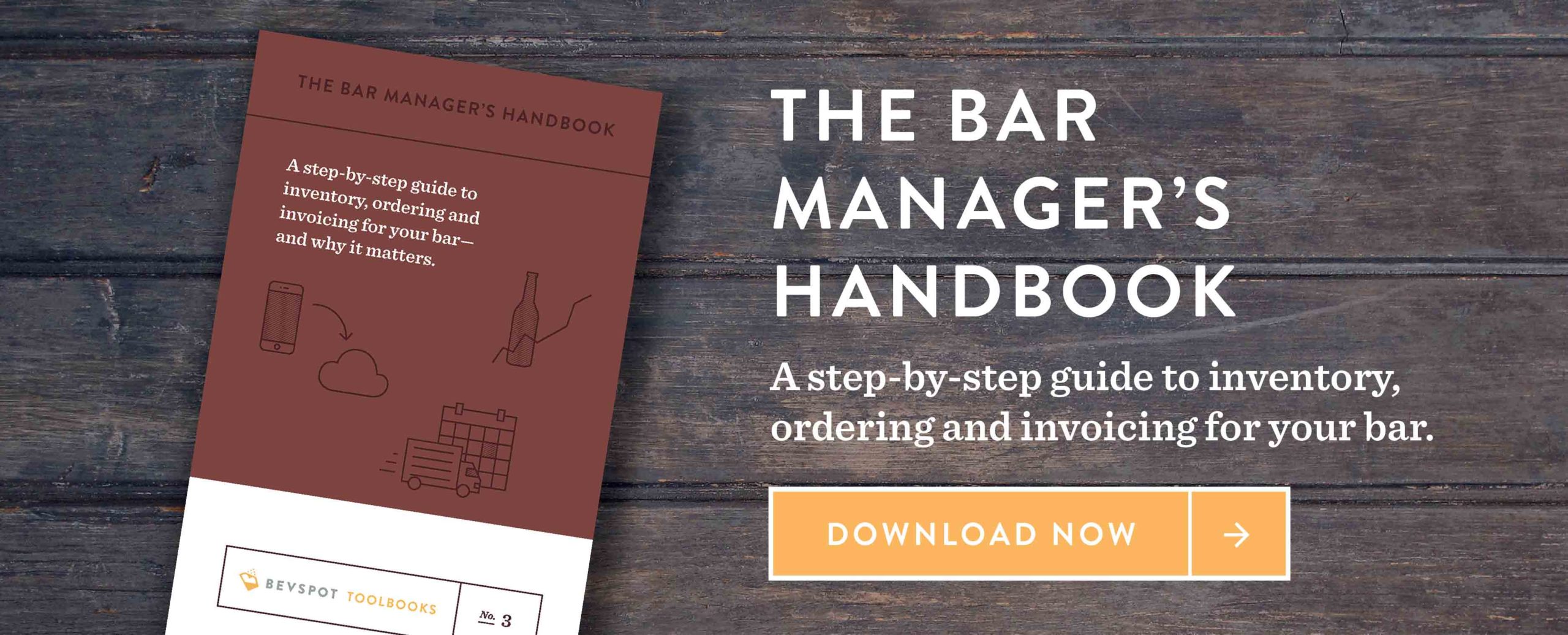
4. Always be learning
Becoming a manager isn’t the end of your training, but an invitation to much more. In addition to keeping on top of beverage industry trends, you should constantly be learning about the best bartending and bar management practices. Visit other bars to see how they function, attend bar managing seminars, stay up to date with new bar and restaurant technology, watch bar training videos, and read tactical articles to offer better training to your staff members and run a more successful establishment.
5. Lead by example
To be a successful bar manager, you shouldn’t be afraid to get your hands dirty. If you’re going to properly train and earn the respect of your staff, you need to know how to make all the drinks on your menu, work efficiently during busy hours, and deal with rowdy customers, firsthand. If there’s any part of your bar that you find yourself unfamiliar with, schedule your shifts in that area so you can learn through experience. Remember, as a manager, you should be able to perform and train your staff on any task at your bar.
6. Know your regulars
Unless you work at an airport bar, regulars make up a substantial percentage of your overall revenue. To keep them coming back, it’s important to make them feel appreciated. Be sure to learn their names and what they usually like to drink. Finding some time to chat with them goes a long way but focus the conversation on them and not yourself. It never hurts to buy them a drink or an appetizer now and then. Don’t forget to pay attention to your other customers too.
7. Make time for customers
As a bar manager, it’s easy to get caught up in overseeing your staff, chatting with regulars, or experimenting with new cocktails. Although leading your team is an essential aspect of your job, you should also take time to interact with all your customers. Ask patrons how they’re doing, how their experience has been, and greet regulars when they walk through the door. Be available to smooth out details, explain drink histories, or answer any of your customers’ questions. This also helps you be aware of what is going on in your bar, should you encounter issues like over-serving.
8. Don’t be afraid to cut off customers
To protect the safety of your customers, your staff, and the general public, everyone in your establishment should be dedicated to serving alcohol responsibly. You should provide alcohol-awareness training to staff so they can confidently refuse to serve an overly intoxicated customer. In most circumstances, your bartenders and servers are in a better position to determine a customer’s sobriety. To empower them to exercise their judgment, you should always support their decision if they decide to cut off a customer.
9. Routinely change your offerings
The question shouldn’t be if you’re going to change your drink menu, but when. In the competitive bar and restaurant industry, it’s important to frequently switch your offerings to keep things fresh. Capture new guests and keep them coming back for more by following seasonal trends, using popular ingredients, and continuously modifying your cocktail list. “New” sells, but don’t mess with your classics. Your wine, spirit and beer representatives are a great resource when thinking about changing your menus and offerings. Speaking of reps…
10. Build positive relationships with your wine, spirit, and beer representatives
Liquor reps are often working with monthly or quarterly placement quotas. If you hold purchasing power, it can be beneficial to build a relationship, beginning with helping them with product placement. A positive relationship can nurture free product, swag, and sporting event tickets, and bring your account to the top of their mind when they are looking to do special events or are aware of deep discounts. They may even help source special products or contribute to menu printing costs.
11. Keep up with industry news
Although keeping up with bar industry news might just seem like another task to add to your to-do list, it’s important to know what’s going on in the industry. Staying informed will help you make better decisions and spot trends early on, giving you an edge over your competition. This is an important part of your development as a manager. As a bar manager, you’re also expected to be an expert in your field. When your bar staff looks to you for expertise, it’s important you know the facts so you can earn their trust and respect.
12. Have solid systems in place
Organization is key to setting your team up for success. Consistent organization of your backbar and rail ensures your bartenders know where specific products are when they need them. The same goes for keeping your storage area organized. In the kitchen, it’s called “mise en place”, or “everything in its place.” Not only will it be easier for your team to find the products they need on a busy night, but ordering and inventory will be easier and significantly more efficient. These systems should extend to how you handle inventory and orders as well.
13. Take inventory regularly
Taking regular liquor inventory is essential for running a profitable bar. It helps you identify theft, weed out poorly priced menu options, assess pouring accuracy, avoid 86’ing products, and understand inventory dollar usage information. Without efficient bar inventory, there’s no way to measure your bar’s success, making it extremely difficult (if not impossible) to manage.
14. Double-check your orders
To keep a fully stocked bar, you’re constantly placing orders and receiving deliveries. To keep your beverage costs down, make sure your invoices reflect your orders. When you receive a delivery, comb through the invoice while the delivery person is still present to make sure you got exactly what you ordered. This way, you won’t pay for products you didn’t receive, and you also won’t pay for excessive product that you didn’t order.
15. Be vigilant
Although you might not like to think about it, your bartenders can drive up your costs by over-pouring, giving away free drinks, and stealing product. In fact, according to the National Restaurant Association, 75% of inventory shortages are due to employee theft. Although you don’t want to be overly paranoid, it’s a good idea to keep an eye out for fraudulent behavior. To protect your bar from theft, consider installing security cameras, reconciling cash drawers, routinely checking bartenders’ tabs, and using some of these other methods.
Developing these 15 habits as a bar manager will help you to effectively manage your staff members, keep your costs down, delight your customers, and run a successful establishment.
To stay up to date with industry news and best bar management practices, leave a comment and subscribe to our blog, below! If you have further questions about how to improve your beverage program, schedule a free bar consultation with one of our product specialists.
Schedule 15mins to chat with a product specialist
Start a FREE Trial Today! BevSpot offers full product education and account setup for all customers! No card Information needed!
Lightspeed POS Partnership
BevSpot & Lightspeed Partner to Provide Enhanced Suite of Features to F&B Operators Globally
Boston, MA – September [DATE] – BevSpot, one of the leading technology companies in the global food and beverage industry, and Lightspeed, a leading omnichannel point of sale platform serving over 77,000 customer locations worldwide, announced a new partnership. The partnership provides a suite of BevSpot’s operational tools including mobile inventory, automated ordering, recipe costing and profitability tracking free of charge to Lightspeed customers, providing them end-to-end visibility into their businesses’ performance and enabling them to take advantage of key opportunities to increase profits.
As more and more operators look to cloud-based solutions to save time and money, the enhanced feature set will help Lightspeed customers increase profits. Seamlessly tracking real-time costs via BevSpot inventory, ordering & invoicing features and combining it with real-time sales data from Lightspeed’s restaurant POS product makes it easy for operators to identify top- and bottom-performing menu items in real-time and adjust costing to increase profits instantly. In addition, real-time profitability reports provide operators with the confidence to understand where their profits, not just their sales, are at any given time.
“I can’t tell you how happy I am with BevSpot. I really love their seamless integration with Lightspeed, it really makes inventory days much faster and it’s much easier to track sales and profitability”, says David Moore of Bootleg Canyon Brewing Co and 2 Wheels Craft Beer Bar in Boulder City, Nevada.
“We are thrilled to partner with Lightspeed to expand the functionality of their industry leading retail & restaurant POS offering with our integration free of charge. There are tremendous synergies in combining Lightspeed’s cloud-based restaurant POS with BevSpot’s cost management tools and this partnership will allow us to provide those benefits to more operators globally,” said Rory Crawford, BevSpot’s Co-Founder & CEO.
“Today, a business’s digital transformation is key to its success and partnering with the right companies to offer value-add features is extremely important for Lightspeed,” says Peter Dougherty, Lightspeed’s VP of Partnerships. “BevSpot’s tools for restaurants integrate seamlessly with our product giving customers a leg up as they continue to innovate during this time.”
About BevSpot
BevSpot builds easy-to-use online technology solutions for the global food and beverage industry. Through BevSpot’s food and beverage management software, customers can take control of their entire operation—from full service restaurants to grab and go smoothie and ice cream shops and even retail corner stores—on any device, all saved to the cloud. Today, BevSpot has empowered tens of thousands of users worldwide to make data-driven decisions and grow their business.
To learn more, visit bevspot.com or if you’re a Lightspeed customer, activate your free BevSpot account in seconds by visiting bevspot.com/integration/lightspeed
About Lightspeed
Lightspeed (NYSE and TSX: LSPD) powers complex small and medium-sized businesses with its cloud-based, omnichannel commerce platforms in over 100 countries. With smart, scalable and dependable point of sale systems, Lightspeed provides all-in-one solutions that drive innovation and digital transformation within the retail, hospitality and golf industries. Its product suite enables SMBs to sell across channels, manage operations, engage with consumers, accept payments and ultimately grow their business.
Headquartered in Montreal, Canada, Lightspeed is trusted by favorite local businesses worldwide, where communities go to shop and dine. Lightspeed has staff located in Canada, USA, Europe, and Australia.
For more information, please visit: www.lightspeedhq.com
On social media: LinkedIn, Facebook, Instagram, YouTube, and Twitter
Press Contact
contact@bevspot.com
The Wayward Somm: Those Drinks are Expensive for a Reason
Before joining BevSpot, Trevor Bernatchez spent over 15 years in the world of restaurants and wine retail. After becoming a Certified Sommelier in 2015, Trevor was looking for new challenges for his career in the beverage industry. As BevSpot’s Sr. Manager of Customer Education, Trevor uses his years of experience and education to help others become more successful with their bars and restaurants.
‘$15 for a martini?! That’s crazy, the owner must be making a ton of money by gouging people with these prices.’
Ah yes…if that were only true! If it were that easy to strike it rich in restaurants I’m pretty sure we would all have one of our own.
There’s a pretty solid reason why they call opening a restaurant a ‘lifestyle investment.’ Truth of the matter is that the odds are stacked against most people opening a bar or restaurant. Almost 60% of all bars and restaurants fail as a business within their first 3 years of being open. That’s a very scary number.
Now, what’s the main reason for this? A lot of people see all the reality shows out there, read books by famous chefs and restaurateurs, and they see it as a glory-filled industry with a lot of idol worship. They start to get into this industry without having any experience and for all the wrong reasons. Fame and fortune are two of the worst reasons to open a restaurant.
That being said, if you aren’t already a zillionaire when you get into this industry, it is definitely possible to strike it rich. Those cases are few and far between and you might have just as much of a chance of becoming a professional athlete in your lifetime.
Truth of the matter is that the average profit margin for most restaurants is 5-6%. Now if you’re running a restaurant that is taking in $1 million in sales every year that $60,000 paycheck doesn’t sound too bad. Definitely a respectable living, but hard to become filthy rich off of that paycheck.
Now, what if you’re not the only owner? What if you need to pay off your investors? That $60,000 dries up almost immediately, and suddenly you’re not getting paid just to keep your dream alive. That’s hard for a lot of people to deal with, especially if you’ve got a family to support.
Also, think of the other side of that equation…95% of your annual sales need to go back into the restaurant in order to keep the doors open. That’s outrageous! No other industry that I can think of off the top of my head requires that kind of capital just to stay open…not even necessarily be successful.
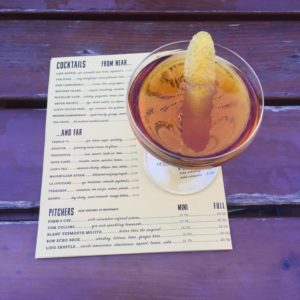
Restaurateurs rely heavily on their bar menu to help balance out profits
When 95% of your revenue has to go back into feeding the machine, you’re going to have to charge a certain amount for drinks just to make sure you’re bringing in enough money to stay afloat. With a lot of businesses taking a loss on their food programs through over-ordering and spoilage of perishables, they need to rely on their bar program to keep them successful.
I’ve seen that an average pour cost of 20% can really make up that difference. So, if you really love a bar or restaurant that you go to a lot, by all means have another drink. Not only is it gonna make you a bit happier, but you’ll be doing your small part in keeping your favorite spot up and running at least a little bit longer.
Want to learn more about BevSpot or the topics discussed in this post?
Click Schedule a Chat to schedule a chat with our team today, or you can also choose to Start a Free Trial to get a more hands-on look at how BevSpot is going to help you run a better business.
The Wayward Somm: Don’t Be That Manager
Before joining BevSpot, Trevor Bernatchez spent over 15 years in the world of restaurants and wine retail. After becoming a Certified Sommelier in 2015, Trevor was looking for new challenges for his career in the beverage industry. As BevSpot’s Sr. Manager of Customer Education, Trevor uses his years of experience and education to help others become more successful with their bars and restaurants.
Imagine you’re coming to the end of your 14 hour double-shift at the restaurant. You’re feet, legs, back, and pretty much everything are screaming at you to sit down and stop moving…
On top of that, all you can smell is the stale ketchup you spilled on your shirt hours ago at table 56, and it’s taking everything in your power to not gag.
As you’re standing by the POS terminal printing your last table’s check, the closing manager walks up to you and points at a fork that’s fallen on the floor. ‘Can you pick that up and bring it to dish?’ they ask as they continue walking into the kitchen, past the dish station (yes, the one you’re about to bring that fork to), and into the office to do some closing work.
This is something that has actually happened to me in my serving days (sadly more than once). Please, I beg all of you, don’t be that manager…
There are two types of managers in the world of restaurants and hospitality; those who will take initiative and do whatever tasks it takes to keep the restaurant running smoothly, and then all the other ones.
The old saying ‘teamwork makes the dream work’ might be played out a bit, but it doesn’t make it any less true. One of the biggest issues I ran into the past was managers that ran teams like a dictatorship, and didn’t lift a finger to help. This can kill a work culture and lead to even higher turnover than usual.
Having managers that lead by example and take on any task, no matter how menial, will go a long way in gaining the respect and trust of your entire team. If you’re willing to go ‘in the trenches’ with your staff night in, night out, you’ll be amazed how quickly the work ethic of your front-of-house staff improves.
Here’s a different scenario, and one that you should strive to recreate if you are a manager yourself. It’s a crazy Saturday night, you’re 15-minutes behind on your reservations, and you have a waitlist an hour-long. You see a table that just got up and you know your busser is in the weeds so they won’t be able to flip it themselves. What would you do? If you get in there, and take the initiative to bus and reset that table, your team members will absolutely take notice. Not only that, but it is going to force them to elevate their game and step it up a bit themselves.
I don’t know about you, but if I walk around the corner and see my GM bussing tables, I’m gonna crank it up to 11 and get the job done no matter what. Unless you are playing the part of host, server, bartender, busser, food runner, back server, chef, and manager at the same time, there really is no single part of a restaurant that can run without the other. You are all simply one part of this machine that needs all aspects working together to come to life every day.
Becoming a manager doesn’t mean you’ve graduated to not doing any more manual labor at the restaurant. It means you’re in a leadership role, and that comes with a great deal of responsibility. So, do your staff (and your career) a favor…don’t be that manager and just pick up damn the fork yourself.
Want to learn more about BevSpot or the topics discussed in this post?
Click Schedule a Chat to schedule a chat with our team today, or you can also choose to Start a Free Trial to get a more hands-on look at how BevSpot is going to help you run a better business.
The Wayward Somm: My Kingdom for a Porter
Before joining BevSpot, Trevor Bernatchez spent over 15 years in the world of restaurants and wine retail. After becoming a Certified Sommelier in 2015, Trevor was looking for new challenges for his career in the beverage industry. As BevSpot’s Sr. Manager of Customer Education, Trevor uses his years of experience and education to help others become more successful with their bars and restaurants.
If you cut back on the number of different ways you stock Bud Light, you’ll be amazed at how much space is going to open up in your walk-in…
Being a native New Englander, and a HUGE proponent of the craft beer movement, I was thrilled to learn we were officially getting our own certified beer style in 2018.
New England IPA is described by the BJCP (the world’s pre-eminent body for judging and classifying beer styles) as, ‘An American IPA with intense fruit flavors and aromas, a soft body, and smooth mouthfeel, and often opaque with substantial haze.’
Lots of beers will have New England IPA or New England-Style IPA printed right on the label these days (more on this later). The most famous one that comes to mind is the legendary (and pioneering) Heady Topper by Alchemist Brewing Co. in Vermont (so O.G. it doesn’t even need NEIPA on the label).
As a beer lover first, and an IPA lover coming in a close second, I have a massive amount of respect for these beers.

Nothing better than a frosty Heady Topper on a fine Vermont afternoon
A LOT of work goes into brewing the beer we drink. On top of that, I know how hard it is to achieve that perfect, glowing hop-haze with dry-hopping (I’ve failed more times than I’d like to mention with my own home-brew projects), settling down with one of these beers is one of the greatest pleasures in my world.
Now that I’ve outlined my love affair with New England IPA, let me tell you why I’m having a hard time with it.
It seems like I can’t buy anything else these days. I go into my local liquor store to buy some tasty suds, and all I have to choose from are 20 different New England IPAs. Now this might sound like a great problem to have, but just because IPA is my favorite style of beer doesn’t mean I only want to shop for IPA.
Different days, moods, and meals definitely require different beers, and they aren’t all golden, hazy, and hoppy. One of the biggest reasons that I am a big supporter of the craft movement is because it allows us to learn about new styles and tastes that we may have never experienced before. It allows us to expand our palates, evolve our tastes, and in some cases blow our minds. If all we are doing is cycling through the same style over and over, we can never expect to push the limits down the line.
That being said, I would never fault a brewer for creating a product that is hot on the market right now. It is so difficult for smaller breweries to turn a dollar with the behemoths like AB-InBev hiding around every corner looking to stomp you out. If you know you can at least fund your next batch by introducing the market to another New England IPA, by all means have at it.
The issue I have lies with the beer buyers out there, but I also understand their predicament. Having been in similar positions with wine and liquor myself, you have to keep the shelves stocked with what is selling in order to keep cash moving into the business…I get it. But that being said, other beer styles do exist…lots of them (like over 100 actually). It’s really easy to be the person who just orders the same thing to stock the shelves with, but the real professional skill comes in balancing your SKUs with variety and educating your patrons on the differing styles. If you cut back on the number of different ways you stock Bud Light, you’ll be amazed at how much space is going to open up in your walk-in.
Want to learn more about BevSpot or the topics discussed in this post?
Click Schedule a Chat to schedule a chat with our team today, or you can also choose to Start a Free Trial to get a more hands-on look at how BevSpot is going to help you run a better business.
The Wayward Somm: Certifiable Part 2 – Exam Day
Before joining BevSpot, Trevor Bernatchez spent over 15 years in the world of restaurants and wine retail. After becoming a Certified Sommelier in 2015, Trevor was looking for new challenges for his career in the beverage industry. As BevSpot’s Sr. Manager of Customer Education, Trevor uses his years of experience and education to help others become more successful with their bars and restaurants.
I had entered a kind of zen-like phase of understanding. After months of studying, there wasn’t really anything else I could do at this point that would change the outcome of the test…
This is Part 2 of The Wayward Somm: Certifiable…click here to read Part 1
Besides the temperature and nerves being high, I was feeling pretty good as I arrived to the exam site at 8:00 AM. I had entered a kind of zen-like phase of understanding. After months of studying, there wasn’t really anything else I could do at this point that would change the outcome of the test.
First was the theory exam which was then immediately followed by the blind tasting portion of the day. Within an hour or so of being in the building I was already ⅔ of the way done with the day, and honestly, not even ⅔ of me was sure I had gotten anything right up to that point. It was such a blur that it was hard to revisit some of it in my mind to reassure myself. Either way, there was no looking back, and as I handed in my tasting sheet I was given a return time of 11:00 AM for the service portion of the day.
I would need to serve a Master Sommelier in a real-world, restaurant setting and answer rapid fire questions about an imaginary dinner menu and wine list while opening a bottle of sparkling wine to the Master’s standards. If that sentence doesn’t give you some level of anxiety, you haven’t been in the F&B industry long enough!
When that rollercoaster successfully came to a stop, I had to wait for six hours until they announced the results. That brings us full-circle back to where we started this post…wandering around Boston’s Back Bay in a full suit, 91 degree weather, and not knowing if I was going to pass or fail.
We all know that this story has a happy ending by now, but the last true test was when they announced the names of everybody who passed. They gather you all in a room, give you a glass of champagne, and start reading off names. If they call your name you step forward to receive your certification and pin. If they don’t…well I think you get the idea.
Naturally after the test was over I was relieved and incredibly proud of the accomplishment. That night I went out with my wife and friends to celebrate. The first thing I ordered was…anything but wine! That’s right, I said it. Much like a bad tequila experience, I couldn’t get wine past my lips for months after that. Don’t worry though, I’ve since recovered and more than made up for lost time in the last few years.

Pour one out: my apartment’s kitchen table the day after my exam. Not pictured, the other 36 bottles I used to practice blind tasting!
In Closing:
At the end of the day, after all the struggle and stress, taking this exam was one of the best experiences of my life, and I feel that I’m a better person for having gone through it. Not necessarily because it opened a lot of doors for me because it really didn’t. That might be surprising to hear, but remember, pieces of paper that say ‘Certified’ can only take you so far. At that point it’s up to you to open that door and make it happen for yourself.
Want to learn more about BevSpot or the topics discussed in this post?
Click Schedule a Chat to schedule a chat with our team today, or you can also choose to Start a Free Trial to get a more hands-on look at how BevSpot is going to help you run a better business.
The Wayward Somm: Certifiable Part 1
Before joining BevSpot, Trevor Bernatchez spent over 15 years in the world of restaurants and wine retail. After becoming a Certified Sommelier in 2015, Trevor was looking for new challenges for his career in the beverage industry. As BevSpot’s Sr. Manager of Customer Education, Trevor uses his years of experience and education to help others become more successful with their bars and restaurants.
It was 91°F, and I was sweating buckets through my brand new suit. Add in the fact that my nerves were on edge, and you’ve got yourself a recipe for one uncomfortable day…
You’re right to think my choice of clothing was strange. People don’t normally want to be wandering around Boston in a full suit this far into the summer, but this day was different.
It was July 29, 2015, and I was waiting to find out if I was becoming one of America’s next Certified Sommeliers. If you’ve read my last post about how I actually became The Wayward Somm, then you already know how this ends, but that only tells a small part of the story.
Why did I decide to get certified?
So, why did I decide to put myself through the process of becoming a sommelier? Well, since I was (and still am) one of the millions of people paying off their student loans, there really was no realistic way for me to pursue a graduate degree. As it was, I’d spent the last 15 years to this point in the hospitality industry in order to help pay for music school and in turn help pay off my loans.
After years building up my passion and knowledge on the beverage side of the industry, I realized that the most affordable path to my higher education was through wine. I had spent years passively building the foundation I would need to successfully become a Certified Sommelier, but if I didn’t want to let all that time go to waste I’d have to act soon.
Once I got myself registered, I had my deadline in place. This was a huge help since I’m the kind of person who needs something looming in the distance in order to get me motivated. Now all I had to do was study…
How did I study for the test?
Let me preface this by saying that I hate to study. I hated it in high-school, I hated it in college, and sadly I didn’t uncover some deep-seeded love for it during this process. Once I got my study guide downloaded and printed from the Court of Master Sommeliers website I got even more anxious because there were hundreds of pages to cover, and that was just in one book (there were another 10+ supplemental resources suggested as well).
Now, even though I hate to study, I have always been lucky to have what I call ‘Jeopardy Brain.’ Meaning I have a strange, innate ability to remember random facts and trivia about certain topics. I realized as I was going through all of these study guides, that I had to treat these as trivia facts I could memorize and pull from the depths of my brain when I needed them most.
Once that started clicking, I had to strengthen up my blind tasting. For those of you who don’t know, in order to pass levels 2-4 (Certified, Advanced, Master) in the Court of Masters program, you need to be able to successfully blind taste wine. By that I mean you have at least two wines in front of you (one white and one red for the Certified level) and you need to use deductive tasting methods to narrow down what wine is in your glass, or more appropriately what isn’t in your glass.
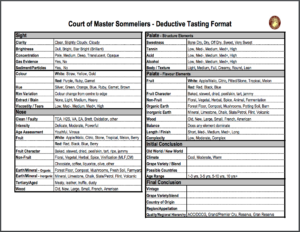
Sample of the CMS Deductive Tasting Grid. This teaches candidates how to approach blind wine tasting.
This seemingly small task makes up ⅓ of your exam (tasting, theory, and service), and was the aspect I was most worried about. How can you pick one of the countless combos of grape varietals and wine regions in the world out of just one glass? Why should you be able to do that? The answers to both of those questions still elude me to some extent, but either way I had to get cracking.
Strangely, the best time of day to taste wine is in the morning. I’m not talking about some point before noon or anything, but literally right after you wake up and get out of bed. Your nose and palate are fully rested and you’re really going to be at your peak abilities at that time of day. Thankfully for me, my wife is amazing, and was one of my biggest supporters on this journey.
Before leaving for work, she would pour me one red and one white wine and have it ready for me when I got out of bed. I’d roll out of the bed and over to the desk in our bedroom and start tasting (not drinking) wine. After finding out if I was right or wrong, I’d go about my day until I needed to report to work. Then my GM, who was already certified, would have a white and a red waiting for me at the restaurant so I could do the whole exercise again, and by the time I would get home at 11:30-ish, my wife would we waiting with two more wines. I really was tasting wine all day long for months leading into the exam (sounds painful I know).
Finally, before I knew it, the day had arrived…
Continue on to Certifiable Part 2: Exam Day!
Want to learn more about BevSpot or the topics discussed in this post?
Click Schedule a Chat to schedule a chat with our team today, or you can also choose to Start a Free Trial to get a more hands-on look at how BevSpot is going to help you run a better business.
Introducing: The Wayward Somm
Before joining BevSpot, Trevor Bernatchez spent over 15 years in the world of restaurants and wine retail. After becoming a Certified Sommelier in 2015, Trevor was looking for new challenges for his career in the beverage industry. As BevSpot’s Sr. Manager of Customer Education, Trevor uses his years of experience and education to help others become more successful with their bars and restaurants.
“Wayward (wā′wərd) adj – Following no clear pattern; unpredictable”
I started working as a bar back when I was 16 years old. Sounds crazy to let a teenage kid handle booze and tap kegs I know, but in the great state of New Hampshire (Live Free or Die right?) it was totally legit. Needless to say, I had the best job out of anybody in my high school. I got to hang out at a bar with adults who were drinking, smoking, and telling jokes that no doubt went way over the head of any minor.
Being a young, shy, impressionable teen in that world could set somebody down the wrong path, but thankfully adults surrounded me who always pointed me in the right direction, and taught me a hell of a lot in the process. Not just about wine, beer, and booze, but some of the most important life lessons I’ve ever learned came while saddled up to that 20-seat bar at Charley’s Eating & Drinking Saloon (RIP).
The one thing that has stuck with me the longest is the main thing pushing me to create this blog series;
“Be true to yourself and create your own journey in this world regardless of what other people might say and do about it. If you allow others to make their opinions yours, and let yourself get put into a box, you’ll be dead long before you die.”
In other words, follow no clear pattern and be unpredictable.
Be wayward…
I kept that close to me over the next 15 years as I graduated from music school, went on tours with bands, moved to California, and moved back all while successfully working my way through the restaurant industry by forging my path and opinions.
By the time I passed my Certified Sommelier exam years later, it was clearly time for me to look for new challenges in my journey. Not that I took becoming a sommelier lightly. It is still one of the accomplishments that I am most proud of, but I saw what my future could look like if I allowed myself work for a program that would handcuff me from making my own choices.
So that brings us here to this blog series. I’ve definitely forged my own unique path, but now I’m a professional without a beverage program to call his own with years of experience, knowledge, and opinions to share with the world…The Wayward Somm.
My mission is this; to share with you my thoughts on anything and everything that has to do with the food & beverage industry…nothing is off the table. You may not always agree with what I have to say (and I won’t always be right), but that’s ok! Healthy, respectful dialogue is one of the best ways for us to learn about other people.
I’m looking forward to being your guide on this sometimes irreverent, but hopefully always entertaining, journey through my experiences in the world of hospitality. Along the way, I hope to help some of you learn to throw caution to the wind, and start to create your own unpredictable journey.
Want to learn more about BevSpot or the topics discussed in this post?
Click Schedule a Chat to schedule a chat with our team today, or you can also choose to Start a Free Trial to get a more hands-on look at how BevSpot is going to help you run a better business.
How to Calculate Plate Costs: Your Kitchen’s Step-By-Step Guide
Managing a kitchen can be extremely hard work. At BevSpot, we’re making the job a little bit easier by simplifying time-consuming tasks, providing access to critical data, and helping drive down costs. Check out this series for helpful ideas and tips on managing a kitchen.
It is possible to run a profitable kitchen and still offer the menu options that you and your customers love.
But it’s critical you stay on top of recipe costs.
Running a restaurant is hard. Fortunately, a kitchen inventory app like BevSpot can make it easier. Unfortunately, truth is that the average restaurant has a 6.2% profit margin and ultimately 60% of restaurants fail in their first three years of business. Arguably the hardest part of running any restaurant is running a successful and consistently profitable food program. While the beverage program tends to be more profitable—average 20% beverage costs—the food program tends to run at an average cost of 33%. In addition to higher costs, the food program tends to be much more complicated than the beverage program with on average more vendors, more perishable inventory, more frequent purchasing requirements, more invoices to manage, more ingredient cost fluctuations, and more complicated recipes to manage.
Effectively managing and calculating plate costs is critical to ensuring a profitable food program and a profitable restaurant. We’ve discussed how to do food inventory and how to manage ordering and invoicing for a kitchen, which will serve as the building blocks for this article. Now we’ll dive into recipe costing and menu pricing.
Before we get started, there is no easy way to calculate and keep on top of food plate costing without software to help automate the process. To help address this we created a beautiful and free recipe costing tool. Feel free to click below if it can help you in any way!
Plate costing basics
In this article, we’ll discuss:
- How to calculate recipe costs
- How to set menu prices
- Ways to use your POS system to manage sales and profitability
- How to track key ingredient cost fluctuations
- How to proactively manage food costs
Calculating Plate Costs
To calculate recipe costs, all you have to do is divide the ingredient cost by how many grams (or other units of measure) are in the purchasing quantity. This gives you the cost per unit of measure, and you can build your recipes from there ingredient by ingredient. Once you’ve determined the cost of a recipe—by adding up the units of each ingredient used—you can take that number and divide it by your desired food or specific plate cost percentage to determine the menu sales price.
Here’s a real example from one of our customers:
The Hanger Steak Entree
10 dry oz. of Beef Hanger Choice @ $8.13 per lbs. / 16 dry oz. = $0.51 per dry oz. = $5.10 total cost
2 dry oz. of Fresh Green Beans @ $3.00 per lbs. / 16 dry oz. = $0.19 per dry oz. = $0.38 total cost
1 Idaho Potato (12 dry oz.) @ $0.55 per lbs. / 16 dry oz. = $0.03 per dry oz. = $0.36 total cost
Total plate cost = $5.84
Ideal food cost = 30%
Recipe menu price = $19.47
Menu price + tax = $21.00
Identifying Top Sellers
With our understanding of calculating recipe costs, we recommend you start with your top 5-10 selling menu items. These top sellers are where you are going to find the biggest bang-for-your-buck.
To access this information, use your POS system and run a product mix or “PMIX” report (depending on your specific POS system the report might be called the “menu item report” or the “sales report”). This report will show you the total number of items sold over any period of time. We recommend you look at the last 4 weeks of sales and sort by most units sold to see top sellers. This will identify your top selling menu items.
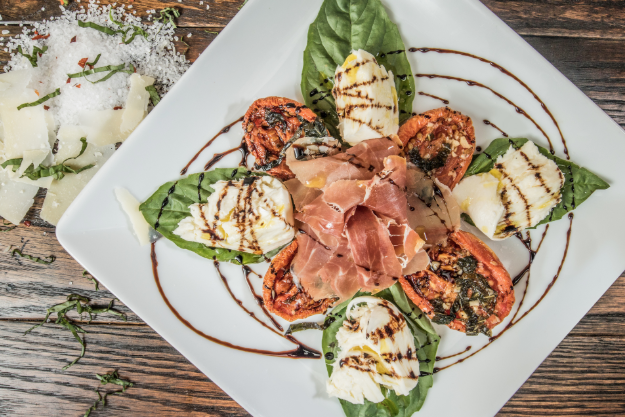
Tracking Ingredient Price Fluctuations
Now that you’ve identified our top selling menu items, it’s time to calculate updated recipe costs for these items using our most recent invoices to ensure up-to-date ingredient costs. Are these recipe costs what you expected? Are there any surprises? There are likely some surprises as the unfortunate fact is that ingredient costs fluctuate much more frequently than you are likely able to reprice menus. This is one of the most common drivers of lost profits for restaurants—the lack of up-to-date recipe costs—which you can avoid by simply implementing a basic tracking process.
To stay on top of recipe costs moving forward we recommend you focus on the key ingredients—typically key proteins like tuna, beef filet, lobster or other key garnishes or ingredients that tend to fluctuate in costs like avocados, limes, etc.—that represent the largest amount of cost in each of your top-selling recipes. With these ingredients identified, you can implement a process to track costs over time that will allow you to get ahead of cost fluctuations and better manage your bottom line.
Establish a regular interval—say weekly or monthly—to key into excel or google sheets the most recent prices of those key ingredients pulled from your most recent vendor invoices. Each column in the sheet will represent a different time period and you can easily see any price changes over time. For instance if last week beef filet was coming in at $12.00 per lbs. and now they are coming in at $14.20 per lbs. (a 20% increase) then you know you need to look hard at any menu items incorporating any beef filet.
Taking Action To Increase Profitability
Armed with updated ingredient costs, and therefore updated recipe costs, for your top selling menu items you can now take some simple but important steps to proactively manage your food costs and ensure you hit your goals (or exceed them!).
Specifically, we recommend you:
- Consider portion control for key ingredients trending up in cost (especially if you think the ingredient costs will come back down)
- Consider ingredient substitutions for lower-cost ingredients
- Train staff to feature menu items that are trending lowest in cost (and shy away from those trending highest in cost)
- Consider repricing the menu item if you think the costs will remain high
- Consider removing a menu item off the menu if none of these changes will work
Every chef, kitchen manager, and/or owner’s worst nightmare is being surprised by food costs at the end of a month. Unfortunately this is all too common when operating without updated recipe costs.
With good recipe processes, your restaurant will be much more capable of staying in front of costs and ensuring your food program’s success no matter what comes.
As always, we at BevSpot are always available to be helpful in any way!
Want to learn more about BevSpot or the topics discussed in this post?
Click Schedule a Chat to schedule a chat with our team today, or you can also choose to Start a Free Trial to get a more hands-on look at how BevSpot is going to help you run a better business.
6 Easy Ways to Customize Your Next Private Event
Ways you can make your private events a knockout success.
Whether you’ve got an expansive banquet room or a small semi-private space, hosting private events at your restaurant can provide a significant boost to your bottom line. If you’re looking for ways to stand out from your competition, offering customization options to event prospects is a great tactic. Below we’re highlighting a few creative ways you can ensure your private events are one of a kind.
1. Mix up the menu
Having a private events menu that’s separate from your regular restaurant menu is a great way to help your kitchen staff work more seamlessly during a party at your space. Event menus are typically pared-down from your usual menu, meaning chefs can better anticipate what they’ll have to fire off during the course of the event.
It’s best to customize the menu for the event. For example, for holiday events incorporate seasonal dishes and flavors. For a networking event, offer dishes that are easy to eat and can be enjoyed sitting or standing.
2. Play into the theme
Small touches can make a big impression on your event client. Showing attention to detail takes the customer service experience to the next level and helps create a lasting relationship, potentially resulting in repeat business, word-of-mouth recommendations, and positive public feedback.
It can be something as small as offering to supply themed decor, renaming menu items to reflect the soiree (“Kayla and John’s Soulmate spaghetti squash” for an anniversary celebration, anyone?), or having servers’ uniforms align with the theme (wearing red poinsettia pins during holiday events, for example).
3. Offer special cocktails
Signature drinks aren’t just for weddings. Let your bartenders flex their mixology muscles by concocting some special cocktails. Offering your event client a signature cocktail option makes them feel valued and like their input truly matters.
You can simply rename a common mixed drink to go along with the party’s theme, or you can go so far as to incorporate the client’s favorite liquor or fruit flavor into a sipper they’ll surely be boasting about all night long.
4. Provide add-ons
Add on packages are a great way to increase the revenue your restaurant makes from private events. Many businesses offer tiered pricing for different levels of event offerings. While a classic event package may include no customization, a top-tier package could include all of your available customization, from string-light rentals to a pair of included onsite bartenders.
This is a great way to leverage common nontraditional event elements too. You can offer a made-to-order omelette station for a morning event or an onsite cotton candy machine for a birthday party. You work with the vendor, the vendor supplies the fun add-on, and the event client has one less item on their to-do list.
5. Suggest preferred vendors
Having preferred vendors is win-win—you bring more business to a company you trust, and you help narrow down options for your event client. Some restaurants have a formal preferred vendors list they work with for things like photo booths, florals, linens, and decor. These should be people who have successfully worked with your location before, ideally on more than one occasion.
If you don’t have a formal list, you can simply pass along contact info. If you don’t have preferred vendors, consider reaching out to those you’ve partnered with in the past to see if you can strike up a mutually beneficial relationship where you recommend them to clients when it’s appropriate, and vice versa.
6. Don’t forget about social media
It’s no secret that leveraging social media is one of the most effective—and affordable—marketing strategies around. First, make sure your business name and location is up to date, so guests can properly geotag your space.
It’s also a good idea to craft a unique hashtag (like #EatatJoes) and encourage followers to use it. This helps give your online presence more organic exposure. A common tactic for this? Note in your Instagram profile that guest posts featuring your hashtag could be reposted on your account, giving the original poster more exposure and supplying you with great content.
Want to learn more about how to market your restaurant? Check out our ultimate industry marketing guide.
Schedule 15mins to chat with a product specialist
Start a FREE Trial Today! BevSpot offers full product education and account setup for all customers! No card Information needed!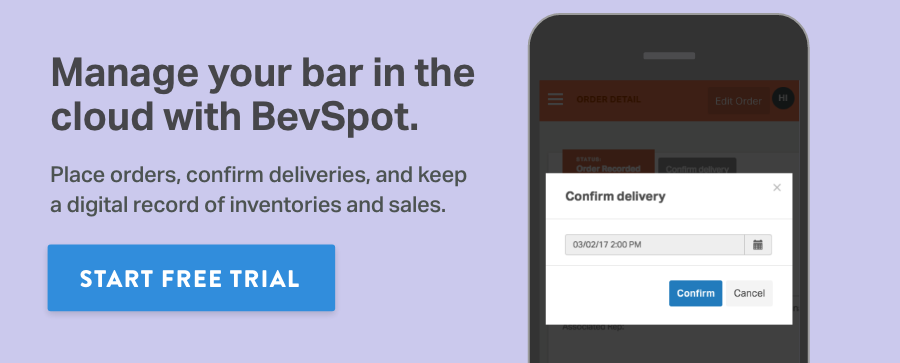
5 Essential Leadership Skills for Bar Managers
Benefits of Strong Leadership Skills for Bar Managers
Building your leadership skills as a bar manager is absolutely essential for employee retention and team morale—and ultimately the success of your bar. Most bar managers get promoted because of their standout bartending skills but often lack training on management and leadership best practices which is crucial for keeping a high-performing team in place.
The restaurant industry is notorious for sub-par HR skills and high turnover rates—one of the highest turnover rates of any industry in fact. In 2016, the U.S. Bureau of Labor Statistics reported the annual employee turnover rate was 73%—that means within a year 73 out of 100 employees will have come and gone.
The first step to avoiding this statistic? It starts at the top. The majority of people leave their job because of their boss—a study by Gallup from 2015 found 50% of employees left their job to get away from their manager. Don’t be the problem. With strong leadership skills, you’ll not only benefit your own career, but you also:
- Reduce your turnover rate
- Save money and energy spent on the hiring process
- Maintain and improve the morale of your team
- Improve the guest experience through a high-functioning team
In short, working on your leadership skills benefits every aspect of your team and the business.
Your Leadership Style
Good leaders know themselves—their strengths, their weaknesses, and their leadership style. Take this quiz to determine your leadership style. Reflect on whether your team would benefit from different styles in different situations.
5 Essential Leadership Skills for Bar Managers
Learn the five most important managerial skills you need and how to strengthen them to create a positive working environment.
1. Communicate effectively
As the manager of your team, each employee looks to you to set the tone for effective and straightforward communication. While new managers often assume this means you have to be formal and distant with the people on your team, good leadership involves confident and relaxed communication.
When customers are crowding around the bar and your signature cocktail has just run out, your team looks to you to set the tone for how to handle a difficult situation. It’s no longer acceptable to lose your temper, regardless of how it was done in the industry in the past. Dealing with an unprofessional work environment should never be considered a “right of passage,” whether someone is just starting out or has been in the industry for years. Think of leadership like a swan gliding through a lake—even if you’re paddling hard beneath the surface, you need to be calm, cool, and collected above the water.
If you keep your cool and communicate in a clear, concise way, it will help your team learn how to problem-solve and stay calm under pressure. Start by identifying the signs of your stress, things like an inability to concentrate to a racing pulse. Before you let these things take over your emotions, take a few deep breaths and focus on altering your thoughts to a more neutral, logical outlook before taking any action.
2. Develop your team members
Your responsibilities extend beyond scheduling shifts, doing inventory, ordering product, and opening/closing the bar—you’re also responsible for the professional growth of each person on your team.
Set up regular meetings with team members, and try to meet at least once a month, if not once a week. These 1:1 meetings are the time to discuss your employees’ professional goals and what they’re looking for from their job, now and in the future. It also gives you an opportunity to provide feedback—both positive and constructive—so your team knows what you expect of them. Scheduled check-ins help your team members feel heard and give you more information on how each person feels about their job.
It’s important to build a trusting relationship with your direct reports so they will feel comfortable being honest. Start these meetings by asking questions about their life outside of work, and inquire about their work/life balance.
Here are great questions to ask during 1:1s to get a sense of current needs and future professional development goals. Ask these questions every meeting and make notes of the answers to refer back to.
- How is work feeling right now? Do you have what you need to do your job?
- Do you feel challenged enough by your role?
- What skills would you like to develop?
- What are your long-term goals?
- What can I do to help?
Pro Tip! When your team asks for more responsibility or wants to develop new skills, make sure you either set aside time to help them accomplish this or delegate some of your own tasks to them as stretch assignments. Watch closely, provide actionable feedback, and encourage them to continue learning.
3. Boost team morale
While having regular discussions with each team member will boost individual morale, it’s important to cultivate the type of culture that’s best for your team. Work/life balance is a huge opportunity area in the restaurant industry, but as the manager, you have the ability to promote health and wellness for your employees.
Ensure each employee has enough time off between shifts and that their weekly schedule works best for them; this is easier said than done, but always making a conscious, authentic effort will mean the world to your team. Another key part of boosting team morale is having dedicated team events where the team can socialize outside of the work environment. Plan a fun outing or do quick team building activities during family meal.
4. Onboard new employees
With the fast-paced nature of bar and restaurant life, taking on new employees can sometimes result in a “trial-by-fire” introduction. Standardizing or simply documenting your onboarding process will save you time and more importantly, make new hires feel more engaged and productive—two aspects that impact high turnover rates.
Map out the activities that should be included in your onboarding process—from logistical aspects, like setting up direct deposit and an overview of benefits, to job responsibilities, like menu training and opening procedures. Some of these sessions can be completed by your experienced team members, and including others is a great way to build relationships on the team. If you don’t have one already, create a drink bible with a detailed list of your house recipes and any classic drinks customers might order. With all of this prepared ahead of time, it’ll be smooth sailing whenever a new person joins your team.
5. Build your expertise
Staying on top of industry trends establishes your credibility and sets the precedent for your team to do the same. If you’re constantly learning new skills and sharing information about the industry, it encourages your team to stay informed and keeps you on top of your game. Also try recommending learning opportunities, like a new industry-related book or a class for advanced bartending skill sets. Get started with our 3 Resources for Becoming a Master Mixologist and keep up with the latest trends with the 21 Bar Industry Blogs You Should be Reading.
Want to learn more about managing your team for the best performance? Check out this guide:
Schedule 15mins to chat with a product specialist
Start a FREE Trial Today! BevSpot offers full product education and account setup for all customers! No card Information needed!
9 Kitchen Metrics to Start Tracking Now
Important kitchen metrics to track regularly to ensure the success of your restaurant.
Bar and restaurant owners have it so much easier than other business professionals because they so rarely have to do math and calculate key metrics.
End sarcasm.
Truth is, the success of any great restaurant or bar is contingent on leadership’s thorough understanding, and regular tracking, of key kitchen metrics. The numbers indicate the health of your operation and point to improvements that can save your business.
The Importance of Kitchen Metrics
Restaurant profit margins sit at a slim 5% or lower—so any business in the hospitality industry knows how important it is to track kitchen metrics. Inventory waste and kitchen inefficiency can quickly result in a less-than-healthy bottom line for the business. The average lifespan of a bar is only around two years, so healthy cash flow and profit are imperative to making it to a third.
That said, it’s easy to understand why tracking these metrics often goes by the wayside. There’s staff to schedule, guests to delight, and orders to fulfill. While this might explain why many restaurateurs and bar professionals do not track key metrics, it does not excuse it.
Below are nine kitchen metrics you should track, how to calculate them, and what to aim for when it comes to peak performance.
Key Kitchen Metrics
It’s a best practice to check these numbers regularly. In fact, 78% of restaurateurs check their metrics and finances every day according to the Restaurant Technology Industry Report, so carve out scheduled time to review the numbers, and make sure you have systems in place to make this analysis as easy as possible.
1. Cost of Goods Sold
Cost of goods sold, or COGS, is the direct cost required to produce goods that are sold by a company. In other words, COGS is the cost needed to produce each of the menu items you sell. In essence, it’s a representation of your restaurant’s inventory during a specific period of time.
It’s important to track COGS because it’s often one of the biggest expenses for a restaurant. Minimizing your COGS (by taking regular inventory, lowering sitting inventory, negotiating better distributor pricing, and controlling food waste) will help increase profit margins.
How to Calculate Cost of Goods Sold
Cost of Goods Sold (COGS) = Beginning Inventory + Purchased Inventory – Ending Inventory
What is a Good COGS to Aim For?
Because every restaurant’s concept, sales, and inventory vary greatly, there is no universal COGS amount that is ideal for all restaurants. Fine dining establishments will have a higher COGS than fast casual. The goal should be to continually try to lower costs without sacrificing the quality of your establishment and the guest experience.
2. Food Cost Percentage
Food cost, always expressed as a percentage, is the cost to create food compared to the revenue generated off that food—or the cost of your inventory (COGS) vs. your food sales. This is absolutely essential to understanding the effectiveness of your food program. Keeping a close eye on your inventory costs and pricing items wisely is core to having a successful business.
You can calculate this metric per-dish or program-wide depending on the information you want. The food cost percentage for each menu item helps illuminate where pricing adjustments should be made to keep dishes in line with an ideal food cost. The food cost percentage for your entire program tells you about the overall profitability of the kitchen.
How to Calculate Food Cost Percentage
Food Cost Percentage = COGS (Beginning Inventory + Purchases – Ending Inventory) / Food Sales
Item Food Cost Percentage = Recipe Cost / Recipe Sales
What is a Good Food Cost Percentage to Aim For?
Overall food cost percentages hover around 28%-35% with many restaurants aiming for even lower than 28%.
3. Kitchen Labor Cost Percentage
Labor is another enormous (and growing) cost for restaurant kitchens—often the single highest operating expense. Kitchen labor cost represents the total amount you spend on labor—including paychecks as well as taxes, healthcare, and employee benefits, etc.
This is most frequently factored, in coordination with COGS, as a percentage of food sales to measure how effective your restaurant is at using labor to generate revenue.
How to Calculate Kitchen Labor Cost
Choose a particular period of time for which you will calculate kitchen labor cost (a month, a quarter, a year). Use the below equation for every employee in the kitchen.
Employee Labor Cost = Wage of Kitchen Worker x Amount of Time Worked
Kitchen Labor Cost = sum of all Employee Labor Costs
How to Calculate Kitchen Labor Cost Percentage
Use the same time period as above for food sales to determine kitchen labor cost percentage.
Kitchen Labor Cost Percentage = Kitchen Labor Cost / Food Sales
With the complexity of a large staff that may work both hourly and salaried, a workforce management software can help you keep track of time worked.
What is a Good Labor Cost to Aim For?
This will vary restaurant to restaurant, but as a general rule, kitchen labor cost and food COGS combined should be 55-60% of total food sales. The exact breakdown between COGS and labor cost is entirely dependent on your concept and can fluctuate up and down as needed. More on the relationship between COGS and labor cost in the next very important metric.
4. Prime Cost
Prime cost is a comprehensive picture of the money you spend to create something to sell. It’s the sum of your COGS and labor cost. These are the two biggest expenses that are always changing but also under your control—making prime cost all the more important to track closely. Prime Cost Percentage puts your direct costs in context of your sales to help you get a beat on the health of your business.
Note: Prime cost is typically figured at the restaurant level—meaning both food and beverage.
How to Calculate Prime Cost
Choose a particular period of time for which you will calculate prime cost (a month, a quarter, a year).
Prime Cost = Labor Cost + COGS
How to Calculate Prime Cost Percentage
Use the same time period as above for total sales to determine prime cost percentage.
Prime Cost Percentage = Prime Cost / Total Sales
Good Prime Cost?
An ideal prime cost percentage should be 55-60% of your restaurant’s total sales.
5. Inventory Usage
Inventory usage refers to the rate at which you work through a given product or ingredient over an allotted period of time, whether that be weekly, monthly, etc. The word “usage” here equals how much usable inventory you have divided by your depletion rate.
How to Calculate Inventory Usage
Inventory Usage = Sitting inventory / Average Inventory Depletion
For example, if you have twenty dozen eggs from a recent inventory order and use ten dozen per week, you have two weeks of usage for eggs.
What is a Good Inventory Usage Goal to Aim For?
As with COGS, there’s no one-size-fits-all inventory metric every restaurant should strive to hit; this goal should be set based on your restaurants past performance and metrics. Make it a goal to consistently examine how long your ingredients last and compare those numbers over time. This can give you insights into how your sales are going and if your restaurant is growing.
6. Item Profit Margin
Your kitchen could be bleeding profit if you don’t know how much you’re making on each item. This metric is the inverse of food cost—instead of telling you how much you’re spending on each dish, it’s telling you how much you’re making on each dish to pay your bills and reinvest in your business.
How to Calculate Menu Profit Margin
Profit Margin = Item’s Sale Price / Total Cost for Item
What is a Good Profit Margin to Aim For?
Average food cost ranges between 28%-35%, so your profit margin for a menu item should fall between 65% and 72%.
Additionally, here are three more important kitchen metrics to watch.
7. Daily Sales Forecast
Knowing your predicted sales for the day, week, month, long weekend, or holiday is a crucial metric. When you’re confident and informed about how much you are expected to sell, you can accurately decide how many people to staff and how much inventory to order.
Sales forecasting can be a bit complicated, but it’s a lot easier with a restaurant POS that lets you review reports from your restaurant’s history.
8. Best Selling Menu Items
Some simple menu engineering tactics in conjunction with data from your restaurant’s POS can help you identify your best seller and most popular menu item. This knowledge helps make inventory ordering easy, because you know you’ll need a steady supply of the ingredients to make the dish.
You can pass this information off to your restaurant’s marketers who can feature the menu item prominently on social media to boost engagement and bring in new and old customers.
9. Worst Menu Item
Conversely, you should be able to readily identify your worst performer on the menu—either in terms of profitability or popularity. A highly popular but low-grossing menu item might mean it’s time to raise the price, since the demand is clearly there.
An item that isn’t selling well or making much money might warrant being cut from the menu.
Turning Things Around
If your restaurant’s kitchen metrics aren’t shining as brightly as you might hope, this doesn’t mean you’re done for. Identify the metrics that are underperforming, find the root cause of the problem, and begin a course of correction. For example, if COGS is higher than you might expect, start taking regular inventory on key items and observe the kitchen when it’s in action. Holding BOH accountable for accurate measurements could turn things around in a matter of days.
Ultimately tracking these metrics consistently will help you make smart choices, spot problems, and solve them ASAP. And your business will thrive.
Love data and want an easier way to collect, store, and analyze it? We can help.
Schedule 15mins to chat with a product specialist
Start a FREE Trial Today! BevSpot offers full product education and account setup for all customers! No card Information needed!
The Football Season Playbook for Restaurants
Are you ready for some football?
According to Nielsen ratings, the average NFL game drew between 18 and 27 million viewers during the 2017 season. Odds are, some of them would enjoy watching the big game at a restaurant. With the 2018 season in full swing, we’re sharing tips on how you can use football season to drive traffic and sales in your establishment and how to do it without sacrificing what makes your establishment unique.
Your Football Party Goals
First think about what type of football party you want to host and what your goals are. For instance, catering to your Sunday regulars by showing the hometown game at the bar with a few food or drink specials is great for customer loyalty. But if you want to increase traffic and sales at your restaurant, it’s likely better to throw a more involved viewing party with perks that will draw in new customers and keep them coming back all season long.
The Logistics
There are a few things you need to make sure you have in place before hosting football parties at your restaurant.
- The right cable package: This one depends on the type of night you plan on hosting. Just showing the local game? Basic cable is probably fine and won’t cost you a fortune. But if you want to show all the games being played, you’ll need a more advanced cable package. Streaming services like Hulu Live, fubo, or CBS All Access, may also be an option. Just watch out for blackout restrictions or you may end up missing the game entirely.
- Viewing options: This is another question of atmosphere. Are you showing one game or all of them? Do you want all of your patrons to be able to watch the game, or do you have a space cordoned off? On days with no games, will TVs be at odds with the atmosphere of your restaurant? Answer these questions before buying any additional TVs. Depending on your setup, you could also use a projector to show the game. This allows you to not only adjust screen size, but a projector is small and can be stored or cleverly hidden between events.
- Your space: Do you or your patrons expect a certain atmosphere? Are you worried loud or rude customers will create a negative experience for people not there to see the big game? If you have the space, or the ability to partition off part of your space, consider allowing patrons who simply came for dinner to enjoy it, while giving your game customers a space to have fun.
The Festivities
Once you have the logistics locked down to host game night, you can go about designing the event.
- The Food: There are some things on gameday that are just sacrosanct: beer, wings, and a variety of fried-and-terrible-for-you offerings. Use the classic staples as inspiration for something that is true to the vision of your restaurant. Unique means memorable, which means great word of mouth, online reviews, and repeat business.
- The Atmosphere: You can go all out for gameday with flair and decorations, or you can keep the aesthetics of your restaurant the same. Small tabletop decorations and a few festive touches on the bar work just as well as going all out with jerseys, streamers, and a custom dress code for the staff. If you don’t feel going overboard is appropriate, don’t do it.
- Specials & Promotions: Give people who don’t often visit your restaurant a reason to come in. Anyone can carry the game on Sundays—what about your event is unique? Deals on drinks are fine, but you can do more to stand out. You can run a themed trivia party during the game. You can offer deals that hinge on the outcome of the game (which will keep people in-house for the full duration of the game, no matter the winner or loser). You can give away tickets to NFL games. You can open early for a brunch “tailgate” party.
- Fantasy Football: If you’re feeling particularly industrious, run a fantasy league! Depending on the laws in your state, you can set up something free and easy online, run one-day fantasy leagues with something like DraftKings, or even go old school and play the pen-and-paper way. This ensures repeat customers, and is an extra incentive to come in. Maybe even sign your restaurant up with a team and put up a special prize for not just the winner but any team that beats you at the end of the season.
Promote Your Event
Get the word out and make your event a smash.
- Website: Make sure your event, which will likely run all season long, are featured on your website. Include times, activities, and any deals for that day.
- Newsletters: If you have a mailing list, start advertising a month before the season begins. Let people know the great things you have coming and build the hype around the return of the season.
- Radio: Radio is still a huge presence in the sports world. See if you can swing a sponsorship with your local talk radio hosts or take out air time. You can be sure the sports fans will be listening.
- Social Media & Flash Giveaways: Flash giveaways are an amazing way to promote your restaurant and your events. Give away gift cards or free drinks on game day, or even the occasional tickets, with random drawings for people who attend your events.
Anticipate Drawbacks
Gameday energy can be infectious, but it can also be rowdy. Having a few contingency plans in place can help minimize any unideal fallout.
- Technical Issues: No matter how good you are with computers, TVs, or electronics, things can still go awry. Tackle (see what we did there?) this potential problem from a few angles: first, test your gear long before the games actually begin. Nobody wants to spend half an hour looking at their phones for the score because an input somewhere was loose. It’s frustrating for the customers and you as well. Second, if something does go wrong during the game, make sure there’s someone on hand who knows how to fix it. Quick fixes make for happy customers.
- Disruptive customers: Depending on your type of establishment, a large group of unruly customers may be something fairly new. That said, everyone has had to deal with trouble from patrons at some point. Be aware that a gameday atmosphere can become charged, so have your staff ready to act quickly and professionally should the need arise.
- Complaints from regulars: Patrons out for a regular dinner can be disrupted by the game. This type of unhappy patron is usually easier to deal with than drunk or unruly patrons, and calm explanations and positive listening skills are a huge part of service recovery here. Make them feel heard, and most people will understand.
The start of football season brings with it a certain energy. The wind carries the first feeling of fall. The changing of the leaves isn’t far off. There’s an excitement to it. This energy and excitement is something you can harness at your restaurant or bar, all without breaking your atmosphere or your budget.
Schedule 15mins to chat with a product specialist
Start a FREE Trial Today! BevSpot offers full product education and account setup for all customers! No card Information needed!
